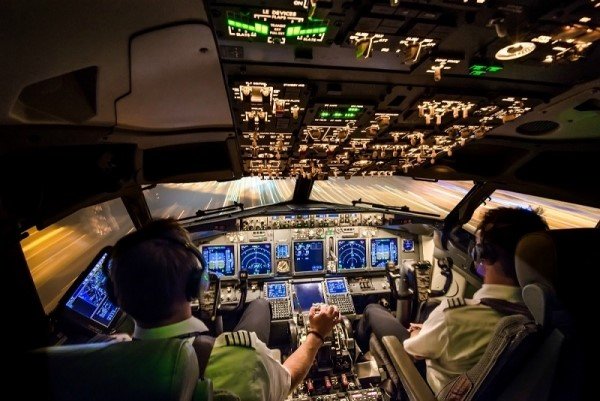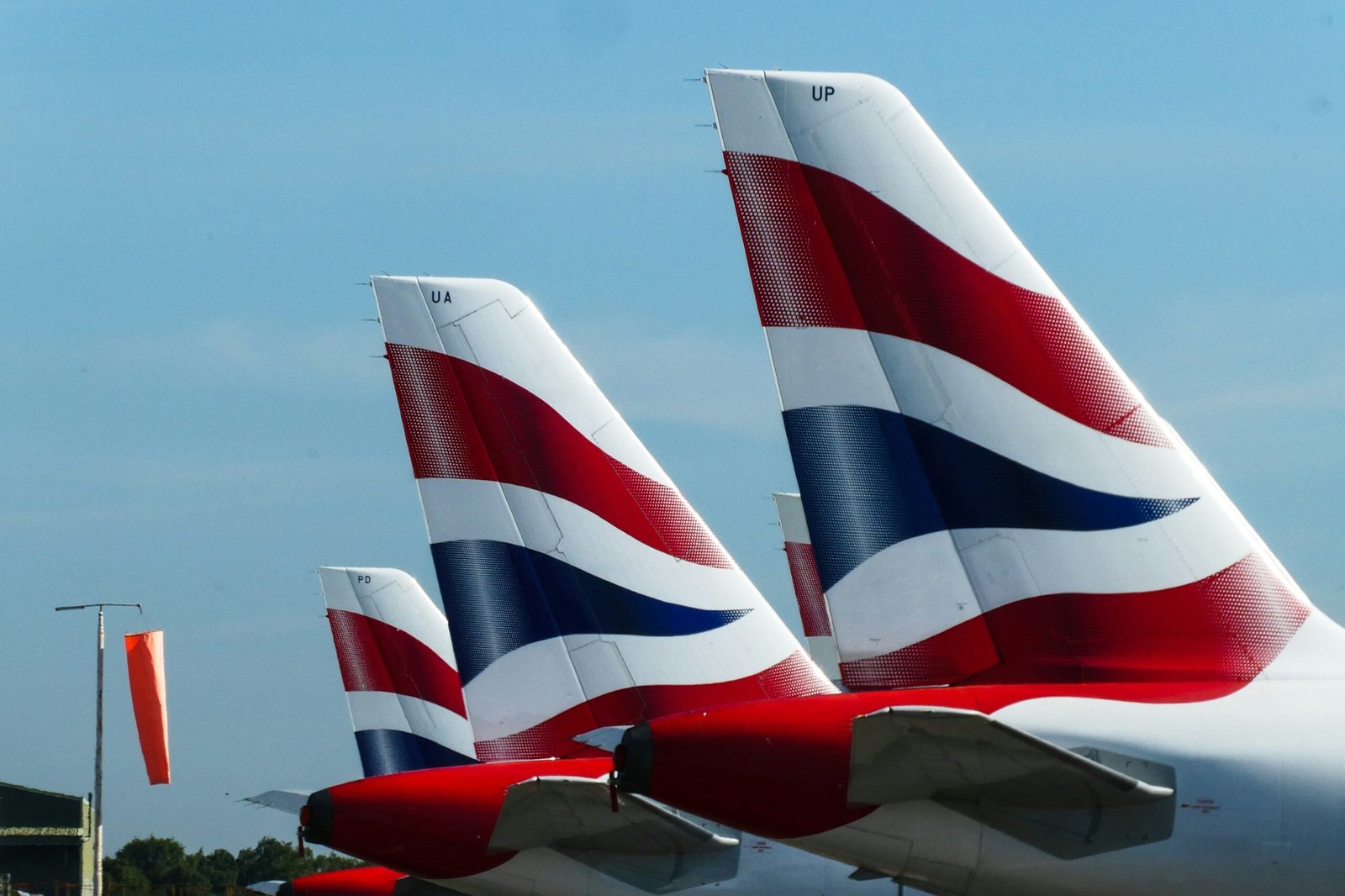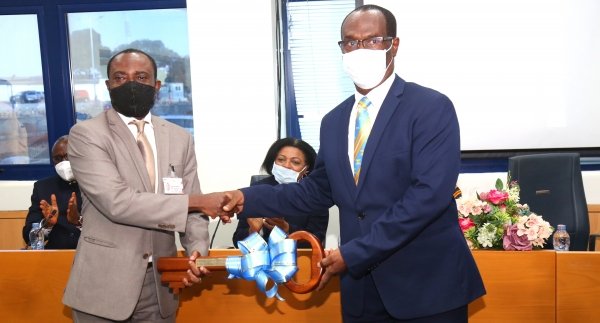7th Sep 2018 | Elizabeth Sasu
Flying across the world at the controls of some of the most sophisticated aircraft in existence, is, for many, a dream job. So understandably you’ve asked the question: How do I become a commercial pilot?
On the road to a career as a commercial pilot, you’re going to have to make many decisions – there’s no ‘normal’ route to a job in the left-hand seat, there are many different training routes, financing options and career paths. In this article, we’ll answer just a few of those questions which will get you off on the right foot.
Where do I start?
Before signing on the dotted line for any kind of commercial pilot training, you should look into obtaining your initial Class 1 Medical, which is necessary for anyone wishing to train for a commercial or airline transport pilot licence.
Don’t be fooled by some of the myths such as, ‘I can’t be a professional pilot because I wear glasses.’ Contrary to popular belief, you can fly commercial aircraft wearing glasses or contact lenses, as long as your vision is correctable to 20/20.
Applicants for an ATPL licence must be at least 21 years old, and all medicals must be carried out by a UK CAA-approved Aeromedical Centre (for UK trainees). You can expect the medical examination to take up to four hours, and it examines your medical history, eyesight, general physical check, hearing, heart rhythm, lung function, as well as including blood and urine tests. More details on obtaining a Class 1 can be found here.
Be aware that becoming a commercial pilot is a huge financial commitment and is also very competitive. Shop around a wide variety of training schools, consider all the different routes and finally, gain experience.
Work placements with aviation companies can help, but if you’re at school – get involved with your local Air Training Corps or Combined Cadet Force. If you’re going to university, consider the University Air Squadron too. All of these experiences will help you to decide whether a pilot career is for you, as well as setting you in good stead once you get to pilot selection and when you’re competing for airline flight crew jobs.
I’ve heard about a pilot shortage – is it true?
Yes and no; there’s certainly mixed evidence. It’s true that Boeing’s Pilot and Technician Outlook projects that between 2015 and 2033, the world’s aviation system will require 533,000 new commercial airline pilots, but the truth of this is that almost half of these pilots will be required in the Asia Pacific region. The Gulf airlines continue their huge expansion plans, with more aircraft orders placed by the quarter and Emirates recently announcing plans to hire more than 11,000 staff in 2015.
However, it’s likely that the Gulf carriers and other fast-expanding airlines will look to recruit mainly Captains; further down the career ladder, there will still be plenty of competition. If there is to be a shortage of trained pilots, it will likely be felt by the regional airlines as experienced staff are snapped up by the bigger and more prestigious carriers.
It’s also true that due to adjustments in pilots’ age regulations, there is large number of pilot captains set to reach retirement age over the next few years, which has created greater awareness of the need to train pilots of the future with a captain’s skill set in mind.
However, entry into the profession still remains overwhelmingly competitive, particularly for European and American First Officer jobs – certainly for the foreseeable future, the effects of a pilot shortage will not be of any major benefit to those looking for jobs in the next few years.
How much will it cost and how do I pay for it?
Paying for your professional flight training is one of the most expensive investments you’ll ever make. Depending on the training route you follow, you should be prepared to pay around £60,000 to £100,000 to train for your initial licence. You can borrow the money from certain banks and some schools are able to help with this. Many students though turn to the bank of mum and dad, or working their way through the training.
The only option for most is to find a sponsored programme. UK airlines and flying schools do run such schemes, but they are highly competitive. For example, British Airways says it has received more than 4,500 applications for its fully-sponsored Future Pilot Programme since its launch in 2012, for roughly 100 places a year. Virgin Atlantic’s scheme launched in 2014 saw similar application numbers for just six places.
Whichever route you choose, you’re going to want to make sure that your investment is secure. So what steps should you take?
- Research your chosen ATO. How long have they been trading? Do they have any history of financial problems? What links do they have with major airlines? Most ATOs operate on a very strong financial footing but sadly it’s not unknown for an ATO to go under, sometimes taking their students’ investments with them. It’s obviously best to go with a well-established organisation with impressive industry links.
- If you can, pay module-by-module rather than all up-front. Even some integrated courses offer a pre-designated schedule to draw down payments in instalments over the period of your training rather than taking it all in one go.
- Pay for the training by credit card, which can provide some sort of insurance in the event of an ATO going under.
- Does your chosen ATO offer a payment protection programme? These plans guarantee to refund a percentage of your fees should you fail to reach the required standard to complete the course.
- Throughout your training, keep your eyes on the bigger picture, in terms of the financial position of your chosen ATO and the industry in general.
- Finally, remember the old adage: if it looks too good to be true, it probably is.
What type of training and qualifications do I need?
As stated in the introduction, there’s more than one way to qualify as an airline pilot, and none of them is ‘normal’, but the licence you will need to end up with is either an ATPL (Airline Transport Pilot Licence) or an MPL (Multi-crew Pilot Licence).
ATPL is currently the more common licence, and this can be reached through two training routes, integrated and modular. You can expect to pay around £50-60k for modular training and £90-100k for integrated.
The integrated route involves a full-time course of study, generally lasting around 14 months. This takes a student from complete beginner to a position where they are ready to take up a role as a commercial pilot. The main advantage is that a student enters an intense course of study within a dedicated and well-equipped training facility, surrounded by like-minded students and often with links to leading airlines.
Being a full-time student means your progress can be monitored at each stage of training. Should you fail your ground exams and flight tests during your training (and this is exactly the same whether you’ve chosen the integrated or modular routes) while the chance does exist to retake them, airlines do look more favourably on graduates who have passed first time and with top marks.
While much of your training is completed as part of a curriculum that has been set by the CAA, it’s the specific character, location, cost and presentation of each FTO that will help you decide which is the best suited for you.
With banks no longer keen to lend unsecured loans, and pilot training grants very difficult to come by, the modular training route is increasingly popular, offering training towards exactly the same qualifications at the same high standard but for typically half the cost of an integrated course – or less – and within a similar timeframe.
The big difference from the integrated route is that the study doesn’t necessarily take place as a full-time study option or over a set period of time – instead it can be done at the student’s own pace, module by module, as time and money allow. What’s more, in most cases the cost is substantially less and you can train in ‘blocks’, allowing the cost to be spread over a longer period, even allowing you to return to work between modules.
Airlines recognise the benefits of employing graduates from the modular method. Pilots who graduate from the modular route tend to come from a wider range of backgrounds than those from integrated courses, which can be seen as an advantage when working as a member of a team in the cockpit. Modular graduates are also seen as having a greater determination to reach their career goal.
However, it’s also important that commercial students undertake their training at no more than two different FTOs so that they can demonstrate both continuity in their training and the ability to provide clear feedback on their character and achievements from the FTOs supplying the training.
A typical student might complete a module and then take some time out to go back to work and earn enough money to start the next module. Alternatively, they might combine a weekday job with their pilot studies at weekends and in the evenings. This does create its own challenges.
It can obviously take much longer to complete the training and the extra workload of holding down a job while also studying is extremely demanding. Without the support of a strict timetable, and being among tutors and other students, motivation can also be difficult to maintain. Fortunately for the students involved in modular training, FTOs will have experience in helping students to deal with these challenges.
What licence will I get?
If you follow a standard integrated or modular course in the UK, you will end up with a frozen ATPL. The ‘frozen’ part refers to the fact that you’ve passed the theory part of the Airline Transport Pilot Licence; to ‘unfreeze’ it you’ll need to have a total of 1,500 hours flying-time logged.
You’ll also need a type rating, basically the result of a course of training undertaken that is individual to each type of aircraft, e.g. a Boeing 737-400. It’s now common to have to pay for your first type rating yourself, at a cost of between £20,000 and £30,000 – although this could change. You can generally expect any further type ratings to be paid for by your employers.
Alternatively, you can follow the MPL (Multi-crew Pilot Licence) training route, an increasingly popular option. MPL courses are usually run at integrated schools, in partnership with an airline. The huge attraction of this route is that you’re highly likely to get a job with the chosen airline at the end of the training, while for the airlines each curriculum is designed to feature its standard operating procedures.
What’s the training like?
The training itself can be split into specific sections, which typically run like this:
- The ATPL ground exams For many, the most demanding part of the training. You’ll need to pass 14 exams covering subjects such as navigation, flight planning and aviation law.
- Flight training The fun bit. A majority of this may well take place overseas, often in the USA, which offers cheaper flying and better weather.
- Night Qualification Your first additional qualification.
- Commercial Pilot Licence The CPL is a basic requirement to be allowed to fly for financial reward. This is a major stepping-stone. You need a minimum of 150 hours of flight time to get this far, flying aircraft with retractable undercarriage and variable-pitch propellers.
- Multi-engine rating
- Instrument Rating The most demanding of the flying skills, flying solely with reference to the aeroplane’s instruments.
- Multi-Crew Co-operation Learning to work as a team, a requisite for the majority of professional pilots.
A big difference between MPL and ATPL is in the training itself. With an integrated course of study, for example, a student would expect to graduate with an excess of 200 hours flight time. With an MPL this is likely to be closer to 90 hours, with a much larger proportion of the training taking place on simulators.
What is pilot selection and how can I prepare?
You can’t just buy your way onto a flight training course. Most above-board schools will want to know you have the particular skills and personality suited to a pilot career, before they put you through training.
Many schools have specific rules for pilot selection; you will have to apply for and pass a series of selection tests that will gauge your suitability to be a pilot and work in a team. Each ATO has its own tests, although they are broadly similar.
Be prepared to demonstrate a combination of good technical skills (mental maths, spatial awareness and problem solving) along with people skills and a wide knowledge of the industry and the airlines you aspire to fly for. Over multiple stages, pilot selection typically involves online application, aptitude and maths testing, interview and group exercises and simulator assessment.
Although pilot selection may be unfamiliar, like any job interview, preparation is the key – do not leave any of it to chance. You need to prove to the airlines you’re serious about flying as a career: some flying hours under your belt will help, as well as a good basic knowledge of the industry. You also might take a look at Senior First Officer Adam Howey’s article, 10 things to do before pilot selection.
Do I need a degree?
Typically, cadet selection programmes do not ask for a degree in order to apply. However, a degree may still be of benefit, as it means you’re going into the application stage a little older, with a little more experience behind you, and if for any reason you’re no longer able to pursue a flying career, you can still use the valuable skills gained in a degree to seek other employment.
Aviation-related degrees are becoming more popular, particularly since the introduction of the Higher Apprenticeship in Professional Aviation Pilot Practice by the Aviation Skills Partnership, which makes it possible for trainee pilots to benefit from student-loan style funding. This could mean that student pilots can access government student loans potentially of amounts of £42,000.
Many schools are now offering a degree alongside pilot training as standard; ask schools whether they include a Pilot degree alongside their training, as should a graduate struggle to find a pilot’s job when they graduate, it will mean he or she is qualified for other aviation-related employment.
Where do I go for more information?
There are plenty of resources online. Many ATOs have very informative websites and social media and they often host live Q&As too. Remember to keep your options open and grab every opportunity, especially early on. Yes, you may have always dreamed of flying wide-body airliners for Virgin Atlantic or BA, but if you’re willing to travel, be flexible on what you want to fly and accept any challenge, there are opportunities around the world.
Don’t forget, a great source of impartial information is Pilot Careers Live, held at a number of locations around the UK, and throughout Europe. These events bring together leading ATOs and airlines to answer all your questions about a professional flying career.
By visiting Pilot Careers Live you can meet leading pilot training academies from the UK, mainland Europe, USA and beyond, as well as universities, current pilots and former students. There are also presentations from major airlines and trainers. You don’t need to know anything about aviation to attend, the exhibition is designed specifically to help people who require information and are new to aviation.
Source: pilotcareernews



